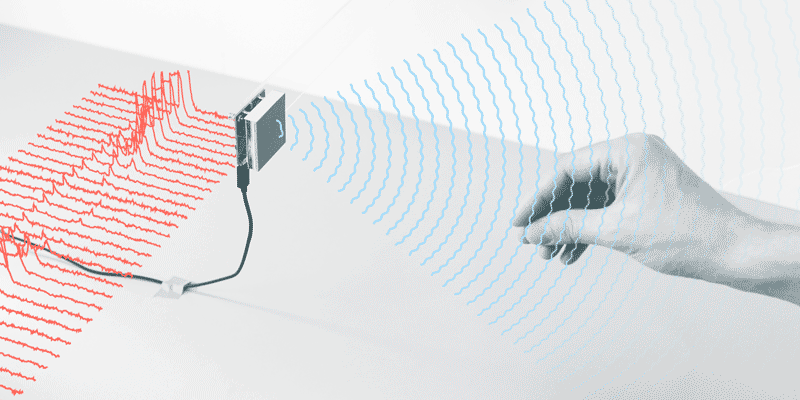Google’s new Pixel 4 phone will be the first to use its Soli gesture tech

The technology is going to be embedded in the new phone and will likely pop up across a range of devices in the future.
The news: The phone will be the first product from Google to use Soli technology. The system will let people skip songs, snooze alarms, or silence phone calls with just a wave of the hand, according to a blog post and video teasing the upcoming launch of Google’s latest smartphone this fall.
So, what is Soli? Google has essentially developed a miniature radar system. It will sit at the top of the smartphone and sense small motions around it. Google has combined the sensor with algorithms that can detect motion and recognize gestures. Radar means Soli can work through fabric, or in the dark. The technology was approved by the Federal Communications Commission in January this year, paving the way for it to go on the market.
Long time coming: Google’s Advanced Technology and Projects team has been working on Soli for years (it was first publicly debuted back in 2015). It’s likely the Pixel 4 is just the start of a wider plan to embed the technology in lots of Google products, such as smart watches, smart speakers like Google Home, high-tech door panels and light switches, and even AR headsets.
Sign up here for our daily newsletter The Download to get your dose of the latest must-read news from the world of emerging tech.
Keep Reading
Most Popular
Large language models can do jaw-dropping things. But nobody knows exactly why.
And that's a problem. Figuring it out is one of the biggest scientific puzzles of our time and a crucial step towards controlling more powerful future models.
The problem with plug-in hybrids? Their drivers.
Plug-in hybrids are often sold as a transition to EVs, but new data from Europe shows we’re still underestimating the emissions they produce.
Google DeepMind’s new generative model makes Super Mario–like games from scratch
Genie learns how to control games by watching hours and hours of video. It could help train next-gen robots too.
How scientists traced a mysterious covid case back to six toilets
When wastewater surveillance turns into a hunt for a single infected individual, the ethics get tricky.
Stay connected
Get the latest updates from
MIT Technology Review
Discover special offers, top stories, upcoming events, and more.